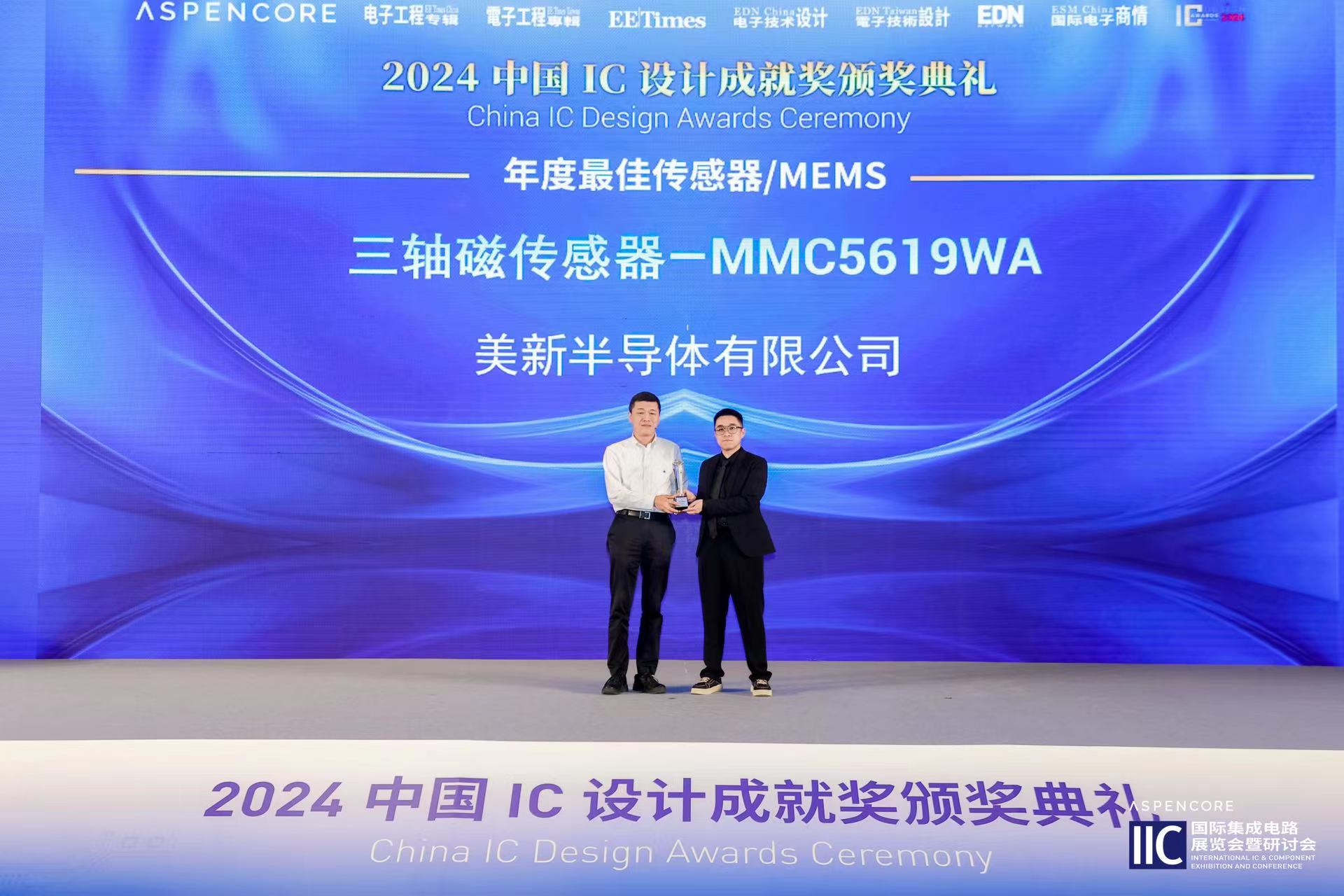MEMSIC's MFC2000 Series Available for Evaluation
Release Time:2016.02.09
MEMSIC is leveraging their industry leading experience in thermal MEMS accelerometers to enable new possibilities for smaller, lower cost, and highly efficient flow control medical devices. Their new gas flow sensors reduce the need for specialized machines in care centers, and will enable gas flow related medical equipment to be economically introduced into the home medical market.
MEMS (micro-electro-mechanical systems) are very small mechanical devices built on silicon chips using specialized techniques that are similar to semiconductor manufacturing processes. MEMSIC (MEMS + ICs) has developed a new line of CMOS gas flow sensors based on their proven MEMS thermal accelerometers, which are used in millions of automotive, consumer, and mobile products every year. Compared to existing diaphragm or turbine-based gas flow meters, the new MFC2000 product line MEMS flow sensors have no flexing or moving parts, which makes them much more durable and gives them very high levels of measurement repeatability. Being silicon based gives them superior power consumption characteristics, with sleep mode currents as low as 1uA and typical operating currents of 3mA, and also enables easy integration with microcontrollers via an I2C interface. Other benefits include low voltage supply operation (2.7-5.5V), greater dynamic range (the ability to measure high and low levels of flow while maintaining linearity and accuracy typically 3% and better) allowing the same sensor to provide the necessary performance over a 100:1 flow range. They also feature bidirectional flow sensing which allows devices integrating MEMSIC’s flow sensors to offer enhanced functionality compared to devices that only measure unidirectional flow. Finally, the architecture of the mass flow sensor module is highly customizable for different flow rates (the technology can be adapted to measure flow rates up to ~ 1000 SLM) and form factors optimized to application requirements. MEMSIC’s first variant of the product line, the MFC2030 Bi-Directional Flow Sensor, is an example of a device that offers these advantages to a wide array of customers and end markets (http://www.memsic.com/flow-sensors/MFC2030).
In a recent interview with Ohlan Silpachai, the Business Development & Marketing Manager for Flow Products at MEMSIC, and Chris Winkler, Senior Marketing Manager at MEMSIC, the two talked about possible medical applications for MEMSIC’s flow control sensors. “Because our solution is chip-based, integrators can easily adapt the product to ventilators, anesthesia delivery, CPAP machines, and many other products,” Silpachai stated. Further, because the same chip can be used for differential pressure sensing, it is possible to enable next-gen features on these machines. MEMSIC recently announced a new product line of differential pressure sensors, the MDP200.
The medical market is already trending towards more home healthcare, as providers and insurance agencies are trying to further optimize their cost structures with the advent of nationally mandated healthcare regulations and programs. Field diagnostics and monitoring, and remote treatment of respiratory conditions such as asthma, COPD, sleep apnea, and can help keep care center visits to a minimum while providing a similar level of monitoring and care as the patient would receive if they were in a care facility.
Winkler went on to explain how the company’s offering open up new opportunities in the healthcare market: “Applying MEMSIC’s flow sensors to devices targeting this opportunity can even enable companies that do not have a competency in flow monitoring to quickly enter the segment and be successful with new miniaturized and battery powered form factors.” Several unique properties of MEMSIC’s flow sensors make this possible. For example, the small size of their flow sensors enables smaller and more portable devices, which are much easier to use in a home environment. Advantages in energy efficiency also play a key role. “Compared to competing technologies,” Winkler added, “MEMSIC’s low power consumption means that designs are no longer constrained by the need for external power. This enables medical device manufacturers to design small, portable battery powered devices, which allow the patient greater freedom of movement and freedom of location.” Third, the MEMS technology means that the flow sensors are much more durable even if they are not in a controlled hospital environment. Care providers can know that any health data they receive from mobile or home-based sensors is trustworthy and accurate. It is also easy to interface MEMSIC sensors’ I2C interface with most microprocessors and microcontrollers on the market today, including mobile-oriented architectures, which keep device size small and inherently enable many forms of wireless telemetry.
MEMSIC’s advances in gas flow monitors can even bring benefits beyond mobility. Healthcare facilities themselves can also benefit; today a typical health care center might have three different and specialized respirator machines—a basic mobile unit is available in emergency response vehicles, while the main healthcare center might have different units specialized for adult or neonatal care. By utilizing a MEMSIC flow sensor with a smaller size and larger dynamic range than currently available components, a ventilator system manufacturer could design a compact universal unit that can replace any or all of the specialized units. “Not only does the device manufacturer benefit because it can sell higher volumes of a single product,” Winkler explained, “but the hospital can also benefit via reduced costs from device standardization.”
It is also possible to add new features to existing types of products. For example, because MEMSIC’s flow sensors are bidirectional and can also detect dynamic differential pressure, a device manufacturer could easily develop a snoring detection feature on a CPAP machine and give their customers an even better night’s sleep than they can get with a traditional CPAP device.
Other applications exist for MEMSIC’s flow sensors beyond the growing home medical market. Natural gas utility meters can be made smaller while maintaining high reliability and enabling remote telemetry for usage monitoring and billing purposes. The benefits to HVAC system monitoring and control are also intriguing. Because the flow sensors are temperature based, it is possible to develop a system that measures air temperature and flow, so that problems can be detected in real-time. This can enable HVAC service companies to offer monitoring services and develop new streams of recurring revenue.
MEMSIC was founded in 1999 by Dr. Yang Zhou, and is focused on the development of products and solutions based on highly differentiated MEMS technology. They combine this MEMS technology with system integration and algorithms to deliver powerful sensing solutions, which enable their customers to develop world-class products for a wide range of industrial, automotive, medical, and consumer applications.
For further information on MEMSIC’s wide array of sensing solutions, please visit www.memsic.com
About MEMSIC
MEMSIC Semiconductor is a world's leading MEMS technology solution provider. MEMSIC provides customers with one-stop solutions from MEMS sensor chips, software algorithms to application solutions. MEMSIC’s stable and mass-produced products include the globally unique thermal accelerometers, capacitive accelerometers, AMR magnetometers, low-power consumption Hall switches and more, which are widely used in automotive, industrial, medical, wearable, smart home, and consumer electronics applications, providing people with a more intelligent, reliable and safe technological experience by sensing the displacement and motion changes of the physical world. Sensing the beautiful life with MEMSIC. For more information, please visit www.memsic.com or follow us on WeChat and LinkedIn.








